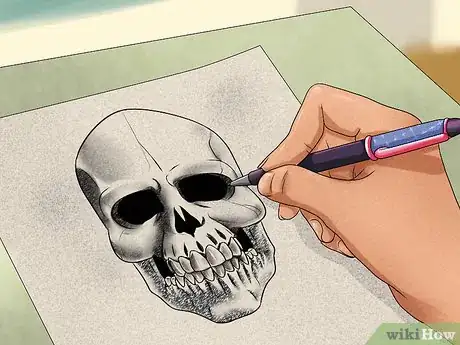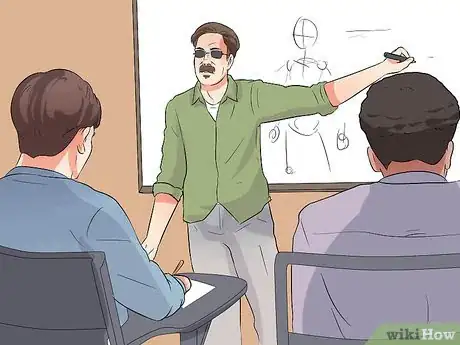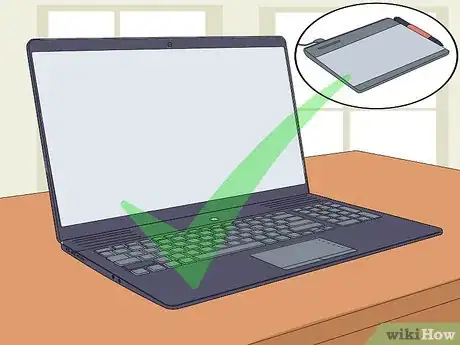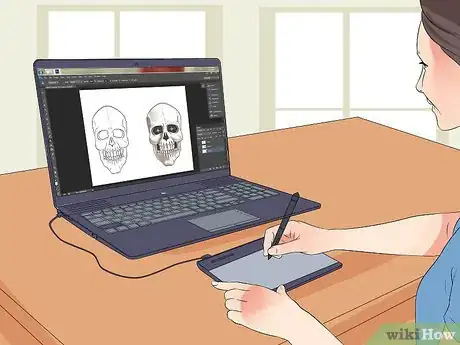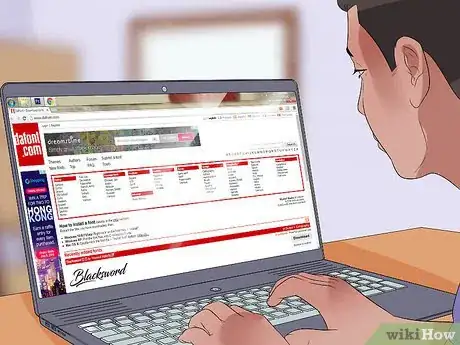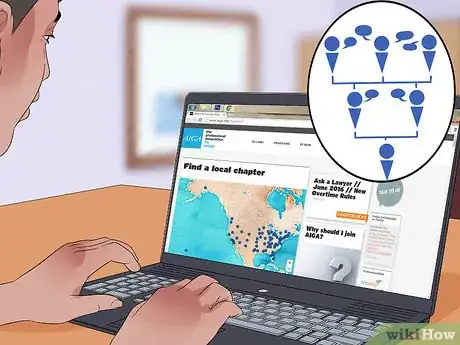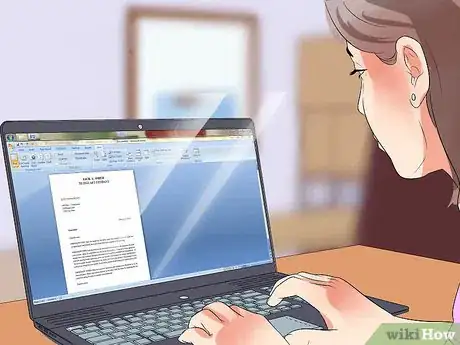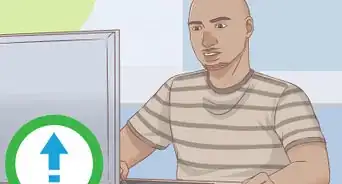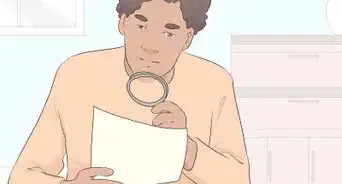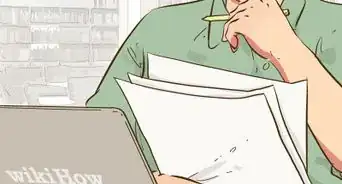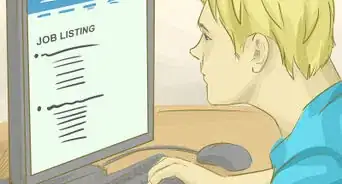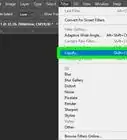This article was co-authored by Mimi Perryman. Mimi Perryman is a Bartender and the Owner of Events with LML, an events company based in the Los Angeles Metropolitan Area but serving the full state of California. With over 15 years of experience in the serving industry, she specializes in traveling bartender services and event planning. She earned a BS in Marketing from California State University-Dominguez Hills, is ServSafe & RBS Certified, and carries a bartending license. She also has a Marketing & Graphic Design background and is a member of the American Marketing Association. Events with LML has a 5-star rating on Yelp and is a featured vendor on The Knot.
There are 11 references cited in this article, which can be found at the bottom of the page.
wikiHow marks an article as reader-approved once it receives enough positive feedback. In this case, several readers have written to tell us that this article was helpful to them, earning it our reader-approved status.
This article has been viewed 91,343 times.
Graphic design is a growing field with many opportunities. Getting into graphic design can seem daunting. Should you design logos, apps, or websites? You may choose to design a specific type of work, or dabble in many different subfields. Whatever you choose to do, equipping yourself with the right technology and understanding some basic artistic principles will set you on the path to becoming a graphic artist.
Steps
Building Your Skill Set
-
1Learn how to draw. You don’t need to take a lot of drawing classes to learn how to draw (though that might help). Instead, pick up a how-to book like You Can Draw in 30 Days and follow the book’s instructions.
- Practicing your drawing for half an hour each day over the course of a month will help you develop your own artistic style and get you used to the rhythm of creative work.
- If you do want to take a class, check your community arts website for information on free or affordable classes.
-
2Get an education.[1] If you plan on working for yourself, you might think that you don’t need a degree. However, even clients that contract a private designer will want to know a bit about your background to ensure you know what you’re doing. Getting an education will give you the bona fides you need to impress potential clients and employers.
- Not only does a graphic design degree expand your opportunities for networking and employment, but it may open your eyes to new techniques, styles, and theories that could inform your work in a positive way.
- While many schools offer graphic design programs, the top-ranked schools include Rhode Island School of Design, Yale University, and the Maryland Institute College of Art.[2]
- Even a certificate program can help you learn a lot more about your trade.
- Take advantage of free graphic design lessons online. Tutorials on how to become a better graphic designer are readily available online. For instance, Envato offers 50 design lessons at http://design.tutsplus.com/articles/50-totally-free-lessons-in-graphic-design-theory--psd-2916. Type a simple search like "How to improve as a graphic designer" into your favorite search engine.
Advertisement -
3Find your specialty. Graphic design is a broad field with many subfields within it. As a graphic designer, you could choose to design logos, mobile apps, websites, and more. Experiment with different aspects of graphic design and pursue the specialty or specialties that speak to you.
- If you want to create websites, check out the book Don’t Make Me Think, Revisited: A Common Sense Approach to Web Usability.
- If you want to design apps, read the book Tapworthy: Designing Great iPhone Apps. Check your local library or bookstore for availability.
- Apple offers many design guides for designers to build new apps on its software. Check https://developer.apple.com/design/ for more details.
- If you are a beginner, you should try sketching your idea on paper before you make a graphic design on the computer.
- It will help you to have an idea of where you are going.
- But when you know graphic design well, you do not need to sketch it out freehand.
Getting the Necessary Tools
-
1Get the right hardware.[3] Graphic design is a technology-intensive field. At the professional level, many jobs depend on having the right set of computer skills.
- Macs are more common in the graphic design world because they are geared towards media use and creation.
- If you’re going to get a PC, ensure it is clear of pre-loaded programs and junk software. This way it will run faster and encounter fewer technical hiccups. Ensure your computer has a powerful graphics card and processor, and a large hard drive.
- It’s important to know the basics of both a Mac and PC, but at home, you will likely have just one or the other. Test both and choose the one that works for you.
- A tablet is also a good graphic design tool. With the right tablet and stylus, you can use it as you would a pen and paper to create slick digital sketches of your ideas or incorporate fine details into your design. The Wacom Bamboo is a good option if you’re looking for a tablet that caters to graphic designers.
-
2Purchase software.[4] Graphic design software can make your job easier, and allow you to quickly accomplish tasks that would otherwise take much longer. While you will probably develop a liking for one particular program, it is best to be familiar with several.
- Adobe Photoshop is a crucial piece of software that every graphic designer should understand. While it could take literally years to gain an in-depth understanding of Photoshop, a basic understanding is easy to obtain. Look for how-to videos online and play around with the program a bit.
- There are also many books available on how to use the many tools Photoshop offers. Check your local library or book store for availability.
- Adobe Illustrator is another important program that you can learn through exploration. Two books --- Adobe Illustrator Classroom in a Book and Vector Basic Training -- can help you understand the basics of the program.
- Additionally, Adobe InDesign, Microsoft Publisher, Quark and CorelDRAW are useful programs to familiarize yourself with.
-
3Download useful tools. In graphic design, as in life, it’s not just about what you say, but about how you say it. Having the right font can make or break a design. Sites like Dafont (http://www.dafont.com/) and MyFonts (http://www.myfonts.com/) are good places to start, but many graphic designers offer their fonts for download through their personal blogs or websites. Look around for fonts that speak to you.
- Make note of well-executed websites or apps. Identify the aspects of each that work, and those that don’t. Use them as inspiration when designing your own work. Once you know what's been done (and being done), you'll be able to identify and develop your own style.
Making a Name for Yourself
-
1Network with others in your field. Join design organizations.[5] There are many graphic design organizations at both local and national levels that host webinars, conferences, and other events where their members can ask questions and learn new techniques.
- For instance, the American Institute of Graphic Arts has chapters throughout the country. Use their database at http://www.aiga.org/chapters/ to locate one near you.
- You could send some of your work to a designer with a style similar to yours, along with a complimentary note explaining, “I think you might like this piece I did recently. Let me know what you think!”[6] If they show interest, develop the relationship and stay in contact with them. They might send work your way.
- Stay connected to your classmates. When you’re developing graphic design skills in college, develop close ties to your classmates. They will be your future peers in the graphic design industry, and could be helpful when you’re looking for work. Be genuinely friendly and interested in their ideas and designs.
-
2Volunteer with nonprofits.[7] Many local nonprofits require graphic design or web design assistance. As a nonprofit, they naturally want to save money on these costs. Offering your graphic design abilities is a good way to both give back to your community and bulk up your resume.
- Identify a charity you believe in and approach them with an offer to help them with graphic design. For instance, if you’re passionate about food justice and poverty, you might approach your local food bank or soup kitchen with an offer to lend a hand.
- Ask the nonprofit’s management what kind of projects they want help with. Draft several iterations for the designs they need and let them choose the one they like best.
-
3Develop an online presence.[8] There are many venues online where you can exhibit your work. Tumblr caters to image-based graphic design posts, though you could also use a blogging platform like WordPress or Squarespace to make a digital showcase of your work. Behance, an online portfolio service, is another good option that you can direct potential employers or clients to. Finally, you could always use more traditional social media like Facebook and Instagram to show your work and get your name out.
- Enter graphic design competitions.[9] Many graphic design organizations and universities offer graphic design competitions based around a certain design feature or theme. For instance, your local university or college might offer design contest based around designing new typefaces.
- Check with the AIGA (http://www.aiga.org/competitions/) and with sites like Graphic Competitions (http://www.graphiccompetitions.com/graphic-design/) to find one you feel qualified to submit work to.
- Winning a competition -- or even placing second or third -- looks great on a resume and can be useful for getting more work. Plus, it will give you the confidence you need to get deeper into graphic design.
-
4Don’t stop creating.[10] Even if you aren’t employed in graphic design, you should use your free time to continue exercising your creative talent and developing your abilities. The more quality material you have under your belt, the more you’ll be able to share with prospective employers when you go on job interviews or seek new clients.
Finding a Job
-
1Look for work. Check employment sites like Monster.com or your local newspaper for employment opportunities. You could also try cold-calling a company you’re interested in working for.[11] You could apply for either a job or an internship.
- An internship is a temporary work assignment with a company or design firm. If you’re lucky, you can get a paid internship. If not, you might settle for an unpaid internship. However, even unpaid internships can provide valuable work experience, network connections, and open the doors to better opportunities further down the road.
- Look for ads that closely conform to your skill set.[12]
-
2Tailor your resume to each job.[13] In other words, if the company is looking for a graphic designer with a specific skill set or specific bunch of experiences, you should be sure to list those experiences and skills which the company seems to be particularly interested in.
- For example, if the employment ad asks for a graphic designer with a degree in graphic design and experience in photography, and you have both, be sure to emphasize that on your resume.
- Double-check your resume and submit a portfolio of your best work.
- You don’t need to list every job you’ve ever had on your resume. List only jobs you’ve had in the past five years, plus any other volunteer positions or internships pertinent to the position you’re applying for.
-
3Write a cover letter.[14] [15] Your cover letter should give more depth to the info on the resume. For instance, if you listed your education and other jobs on the resume, explain in the cover letter exactly what classes you took, and exactly what the nature of your responsibilities at your other relevant jobs were. Limit the cover letter to one page, single-spaced.
-
4Apply for jobs. Submit your resume and portfolio promptly. If the company is accepting applications only until the first of the following month, don’t wait until the end of the current month to submit your application. If the company holds interviews as it receives applications, you could be the first to get an interview. If you impress, you might get the job on the spot.
- Call or visit the company you applied to. If possible, submit the application in person. You could also go to the firm with questions about your application before submitting it. For instance, if the application asks for three pieces of recent work, you could ask if it’s alright to include slightly more than three. Visiting or calling the graphic design department of the company you want to apply to will give the staff there an idea of who you are and help you build rapport with department leaders before they see your application.[16]
- Even if you don’t have questions, it’s a good idea to make a pretext for visiting just to check out the conditions under which you might be working and give the staff there the chance to meet you.
- After a week or so, give the company a call. Say, “Hi, I’m just calling to follow up on the application I submitted last week. I was wondering if you were still conducting interviews for the position? If so, I’d like to schedule one.” If they say they are no longer interviewing for that position, return to the job ads and apply for another job you’re interested in.
-
5Land a job. Nail the interview by being honest, personable, and smart. Dress professionally -- a dress shirt and suit for men, and a tasteful dress or blazer for women. Choose muted earth tones like navy, brown, black, and dark green.
- Prepare and ask questions of the employer about the position. For instance, “When would I start?”, “What departments would I be working with?”, and “How much variety does the position entail?”
- After the interview, send a thank-you note or email to the person or persons you interviewed with.[17] Be specific in your thank-yous by citing particular questions that were clarified or points of interest you learned during the interview.
- If you are trying to get hired by a marketing firm, get ready for some hard work. Be prepared to start at the bottom and work your way up.
- Once you get a position or land a client, give it everything you have. Put every ounce of creative energy you have into every job you do, even if it seems like a minor job. It will pay off in the end, in the form of recognition or more clients.
- Don’t give up.[18] If you don’t get a job right away, don’t worry. If you feel passionate about graphic design and have an artistic temperament, continue to pursue it even if it takes a long time to get an internship or job. Put in lots of applications, continue building your portfolio, and stay in touch with your peers in graphic design.
Community Q&A
-
QuestionHow much can I earn from graphic designing?
 CraftsmartTop AnswererIt really depends on a couple factors. One factor is the type of graphic design. A freelance graphic designer's income depends on the individual project that they are working on. This can be tricky when it comes to finding the right jobs that pay enough constantly. However, if employed as a graphic designer for a company, they might pay you hourly, salary, or by contract, but this all depends on the specific company. It's difficult to give a good estimate on how much you can earn with this career, because it is different for everyone.
CraftsmartTop AnswererIt really depends on a couple factors. One factor is the type of graphic design. A freelance graphic designer's income depends on the individual project that they are working on. This can be tricky when it comes to finding the right jobs that pay enough constantly. However, if employed as a graphic designer for a company, they might pay you hourly, salary, or by contract, but this all depends on the specific company. It's difficult to give a good estimate on how much you can earn with this career, because it is different for everyone. -
QuestionHow much does it cost to use a professional graphic designer?
 CraftsmartTop AnswererThe cost very much depends on the quality of the professional and the type of job you need done. Even the type of payment is dependent on the designer. For example, some designers prefer to be paid by the hour (but will usually give you an estimate), others have a set price for their services. There are several places online to help find a graphic designer, such as freelancer.com or fiverr.
CraftsmartTop AnswererThe cost very much depends on the quality of the professional and the type of job you need done. Even the type of payment is dependent on the designer. For example, some designers prefer to be paid by the hour (but will usually give you an estimate), others have a set price for their services. There are several places online to help find a graphic designer, such as freelancer.com or fiverr. -
QuestionWhat if I can't afford a computer?
 Community AnswerYou will need a computer if you want to do graphic design. Consider shopping for used/refurbished computers if your budget is tight.
Community AnswerYou will need a computer if you want to do graphic design. Consider shopping for used/refurbished computers if your budget is tight.
References
- ↑ http://www.thewonderforest.com/2013/04/10-tips-for-getting-started-in-graphic.html
- ↑ http://grad-schools.usnews.rankingsandreviews.com/best-graduate-schools/top-fine-arts-schools/graphic-design-rankings
- ↑ http://www.thewonderforest.com/2013/04/10-tips-for-getting-started-in-graphic.html
- ↑ http://www.thewonderforest.com/2013/04/10-tips-for-getting-started-in-graphic.html
- ↑ http://www.creativebloq.com/graphic-design/get-career-graphic-design-1012931
- ↑ http://www.creativebloq.com/graphic-design/get-career-graphic-design-1012931
- ↑ http://www.creativebloq.com/graphic-design/get-career-graphic-design-1012931
- ↑ http://www.creativebloq.com/graphic-design/get-career-graphic-design-1012931
- ↑ http://www.creativebloq.com/graphic-design/get-career-graphic-design-1012931
- ↑ http://www.creativebloq.com/graphic-design/get-career-graphic-design-1012931
- ↑ http://www.forbes.com/sites/susanadams/2012/01/31/how-to-get-an-internship/#806d44b47be4
- ↑ http://www.forbes.com/sites/susanadams/2012/01/24/how-to-make-them-respond-when-you-apply-for-a-job-online/#6c72331d4c86
- ↑ http://www.forbes.com/sites/susanadams/2012/01/24/how-to-make-them-respond-when-you-apply-for-a-job-online/#6c72331d4c86
- ↑ http://www.forbes.com/sites/susanadams/2012/01/24/how-to-make-them-respond-when-you-apply-for-a-job-online/#6c72331d4c86
- ↑ http://www.aiga.org/guide-findfirstjob/
- ↑ https://www.themuse.com/advice/5-job-search-tactics-you-must-stop-immediately
- ↑ http://money.usnews.com/money/careers/articles/2014/09/24/job-seekers-how-to-follow-up-like-you-mean-it/*
- ↑ http://www.creativebloq.com/graphic-design/get-career-graphic-design-1012931
About This Article
To get into graphic design, work on developing your drawing skills by practicing for 30 minutes each day, since creative skills are vital in all areas of graphic design. Additionally, familiarize yourself with graphic design computer programs, such as Adobe Photoshop and Adobe Illustrator. In order to get the necessary training, apply for a graphic design degree or certificate program at a college. You can also expand your knowledge of sub-fields, including website design, by taking online courses. For tips on how to find a job as a graphic designer, read on!
